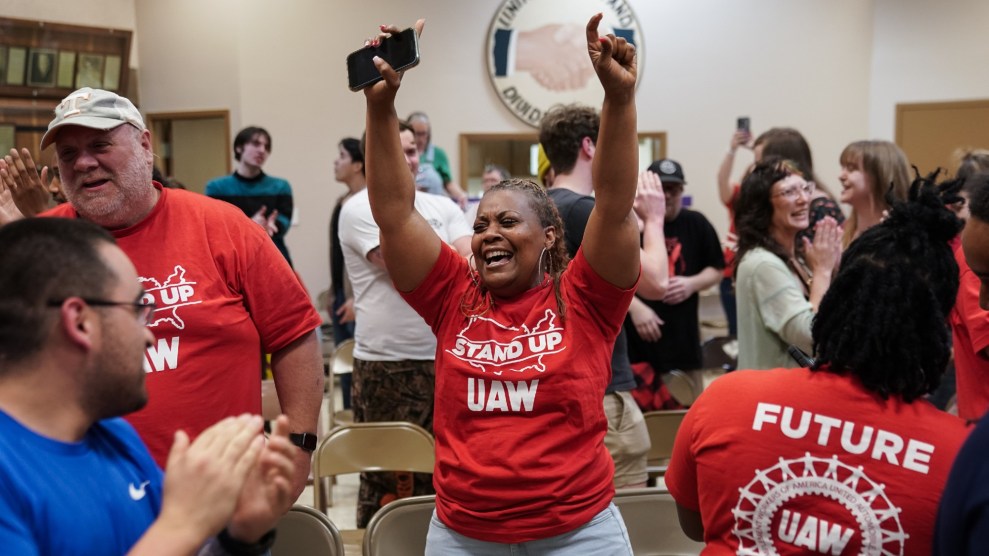Article created by the Center for American Progress.
Over the last year, many moderate and progressive politicians have begun to voice a fairly consistent message about abortion. Wanting to distance themselves from the stereotype that the “Pro-Choice” position equals “abortion on demand,” they have put forth a so-called moderate, “compromise” position: maintain Roe v. Wade but work to reduce the number of abortions in this country. At a rate of more than 1 million a year, reducing the annual number of abortions is certainly an admirable goal. However, there are different ways to reach that goal – some of which will help women and some of which will not.
Simply put, there are two key ways to reduce abortion – by making it less necessary or by making it less available. In our view, only the former approach is humane, effective, and just.
Those who oppose abortion in all or most circumstances generally think the best way to reduce the number of abortions is to make it illegal. By eliminating legal availability, they believe abortion will cease to exist. They hold this view despite undeniable evidence that women continue to have abortions in countries where it is outlawed, under illegal and unsafe conditions that often result in terrible tragedy. Close to 70,000 women a year die from unsafe abortion and numerous others suffer grave injuries, including infection, hemorrhaging, and infertility. This hurts women, their families, and whole communities, but it does very little to reduce abortion.
Anti-abortion advocates have not yet been able to achieve an outright ban on abortion in the United States. Thus, they have worked – very successfully – to make it as inaccessible as possible. By barring public funding, increasing the cost with unnecessary clinic regulations, decreasing the number of available doctors and clinics, imposing waiting periods, and mandating rigid parental involvement laws, anti-abortion activists have put safe and legal abortion completely beyond the reach of a significant segment of our population, namely the young, the rural, and most of all, the poor. As a result, many of the women who have been denied Roe’s protections have either carried and borne children against their will or have faced significant delay in obtaining an abortion, thereby making the procedure more costly, more risky, and more emotionally and morally challenging. Although the strategy of making abortion unavailable may reduce the number of abortions, it does so in a cruel and unacceptable way.
Making abortion less necessary is by far the better approach. The first way to do so is to reduce the incidence of unintended pregnancy. Half of all pregnancies in this country are unintended, and, of those, half end in abortion. Unintended pregnancy could be reduced significantly if we showed true commitment to: 1) comprehensive sexuality education that includes medically accurate information about abstinence and contraception; 2) insurance coverage of and public funding for family planning services; 3) greater access to emergency contraception (which prevents pregnancy and does not cause abortion); and 4) programs that curb domestic violence and sexual abuse. Clearly, women who are able to avoid unintended pregnancy do not have to make the difficult decision of whether to have an abortion.
Unfortunately, even with the supports listed above, there will always be some unintended pregnancies; birth control methods are fallible, as are human beings. Therefore, once a woman finds herself with an unexpected pregnancy, a second positive way to reduce abortion is to ensure that she has the means to have and raise a child in health and safety should she wish to do so. According to the Alan Guttmacher Institute, one of the two most common reasons women choose abortion is because they cannot afford a(nother) child. By providing low-income and young women with genuine education and career opportunities, health care, child care, housing, services for disabled children, and other basic supports, many would have the resources they need to fulfill the serious obligations that parenting brings.
Regrettably, few of these policy goals are mentioned in today’s rhetoric about reducing abortion. Instead, the formula that many moderate politicians have adopted is to look at the list of restrictions promoted by anti-abortion activists – e.g., biased counseling, bans on public funding, prohibitions on specific abortion procedures – and “split the difference,” supporting some but not all of them. Even the 95-10 initiative promoted by Democrats for Life, an ostensibly middle-of-the-road group that claims to have an agenda that would reduce abortions by 95 percent in 10 years, contains meager supports for pregnant women (funding for domestic violence programs and university day care), no provision for birth control, and only vague allusions to pregnancy prevention education.
These half-hearted approaches to abortion reduction are categorically insufficient and appear, more often than not, to reflect a watered down “Pro-Life” agenda rather than a genuine moderate, let alone progressive, one.
Moderation for its own sake and political compromise that sacrifices women’s well-being will not achieve the common goal of reducing abortion in this country. What is needed is leadership and commitment to a vision of society in which all women have the information and means necessary to prevent unintended pregnancies, to carry healthy pregnancies to term, to raise their children with safety, stability, and dignity, and, yes, to have safe abortions when necessary to lead healthy, productive, and fulfilling lives.















